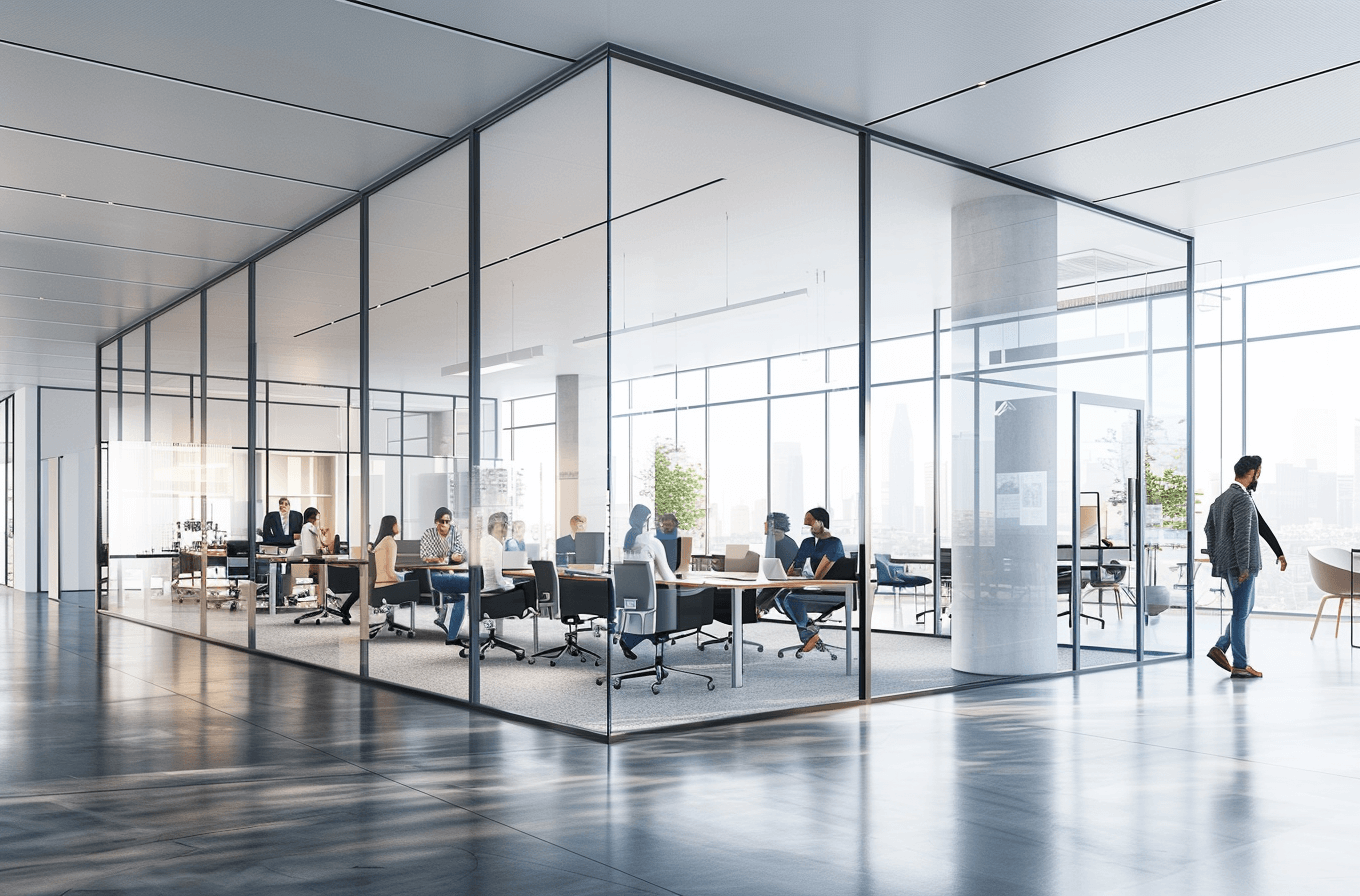 25-Jan-2024
25-Jan-2024
FLEXIBLE WORKSPACES, CLEAR BOUNDARIES: ADAPTABLE OFFICE DESIGNS WITH GLASS PARTITIONS
- Posted by Officework
In today’s rapidly changing work landscape, flexibility is key. Businesses are embracing adaptable office designs that can accommodate evolving needs while maintaining clear boundaries and privacy. Glass partitions have emerged as a versatile solution, offering the perfect balance between openness and separation in modern workspaces. Let’s explore how glass partition walls contribute to the creation of flexible work environments with clear boundaries.
Versatility in Design
Glass partition walls come in a variety of designs, from fully transparent to frosted or tinted options. This versatility allows businesses to tailor their office layout to meet specific requirements while maintaining a cohesive aesthetic. Whether it’s creating private meeting rooms, collaborative work areas, or open-plan spaces, glass partitions can be customized to suit the unique needs of any organization. Additionally, the modular nature of glass partition systems enables easy reconfiguration as the needs of the business evolve over time.
Creating Flexible Workspaces
Flexibility is essential in today’s work environment, where remote work and hybrid schedules are increasingly common. Glass partition walls enable businesses to create flexible workspaces that can adapt to changing dynamics. By incorporating movable or retractable glass partitions, offices can quickly transform open areas into private meeting spaces or vice versa, depending on the need for collaboration or concentration. This flexibility promotes agility and productivity while allowing employees to customize their work environment to suit their preferences.
Maintaining Visual Connection
While creating flexible workspaces is important, maintaining visual connection and transparency is equally crucial. Glass partition walls provide a solution that allows for the division of space while preserving an open and airy atmosphere. Employees can still feel connected to their colleagues and surroundings, promoting a sense of community and collaboration. In addition, the transparency of glass partitions promotes natural light penetration, creating a bright and inviting environment that enhances well-being and productivity.
Clear Boundaries, Enhanced Privacy
Despite their transparency, glass partitions offer effective delineation of space and privacy. Advanced glass technologies allow for the incorporation of frosted or patterned glass, providing varying levels of opacity to meet specific privacy needs. Whether it’s for confidential meetings or focused work tasks, employees can enjoy a sense of privacy without feeling isolated or cut off from the rest of the office. Clear boundaries help maintain professionalism and respect in the workplace while fostering a culture of trust and collaboration.
Promoting Collaboration and Communication
Glass partitions facilitate collaboration and communication by breaking down physical barriers without compromising privacy. In open-plan offices, glass partition walls create designated areas for teamwork and brainstorming sessions, encouraging spontaneous interactions among colleagues. Transparent partitions also promote visibility and accessibility, making it easier for employees to seek assistance or engage in casual conversations. By promoting a culture of collaboration and communication, glass partitions contribute to a more cohesive and productive work environment.
Conclusion
Glass partition walls offer a versatile solution for creating flexible workspaces with clear boundaries in modern offices. By combining transparency with adaptability, glass partitions enable businesses to maximize space utilization while maintaining visual connection and privacy. Whether it’s facilitating collaboration, accommodating hybrid work arrangements, or promoting employee well-being, glass partitions play a vital role in shaping the future of work. As businesses continue to adapt to changing needs and preferences, glass partition walls will remain a cornerstone of flexible and adaptable office designs.

Comments